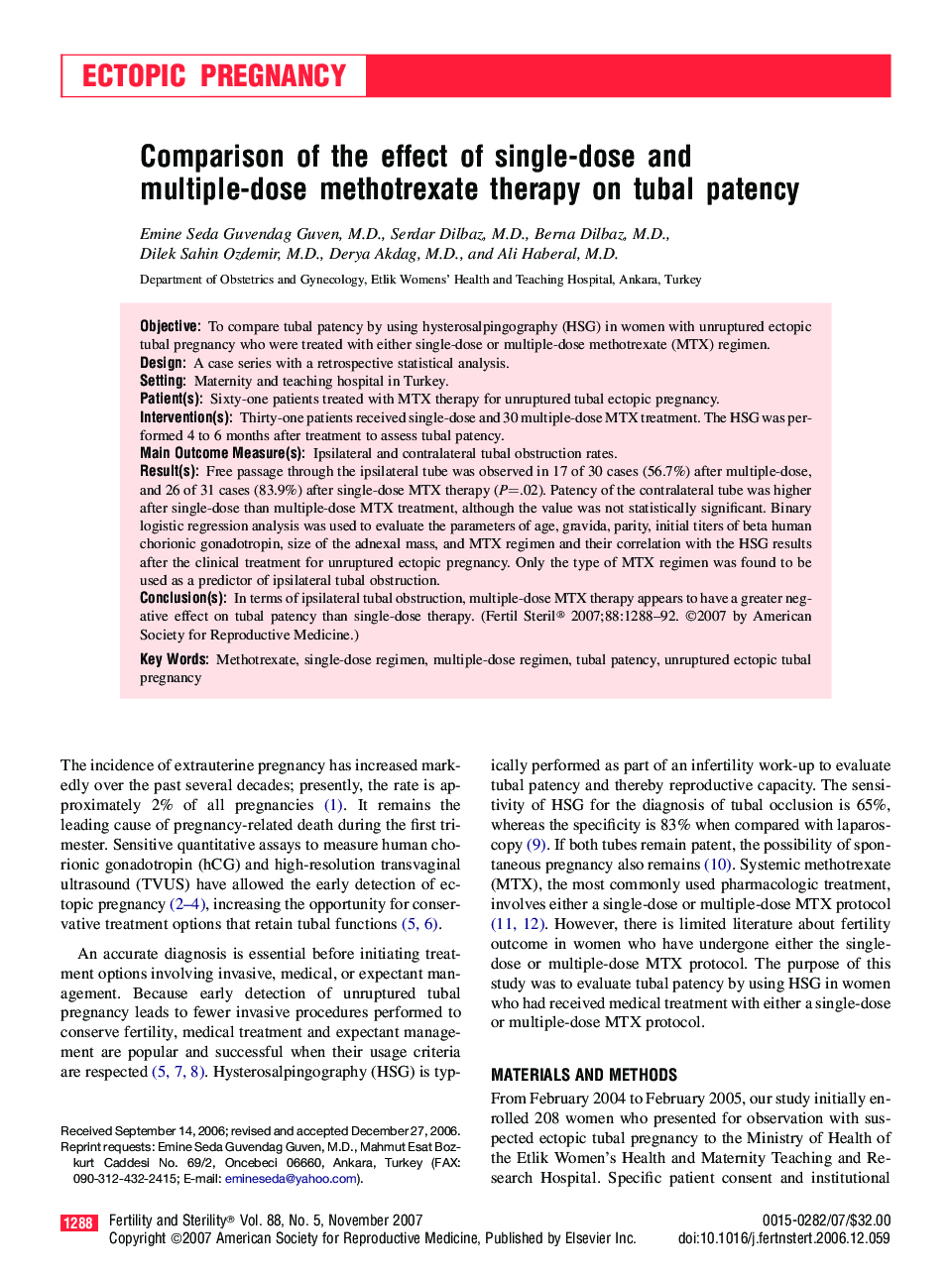| Article ID | Journal | Published Year | Pages | File Type |
|---|---|---|---|---|
| 3941935 | Fertility and Sterility | 2007 | 5 Pages |
ObjectiveTo compare tubal patency by using hysterosalpingography (HSG) in women with unruptured ectopic tubal pregnancy who were treated with either single-dose or multiple-dose methotrexate (MTX) regimen.DesignA case series with a retrospective statistical analysis.SettingMaternity and teaching hospital in Turkey.Patient(s)Sixty-one patients treated with MTX therapy for unruptured tubal ectopic pregnancy.Intervention(s)Thirty-one patients received single-dose and 30 multiple-dose MTX treatment. The HSG was performed 4 to 6 months after treatment to assess tubal patency.Main Outcome Measure(s)Ipsilateral and contralateral tubal obstruction rates.Result(s)Free passage through the ipsilateral tube was observed in 17 of 30 cases (56.7%) after multiple-dose, and 26 of 31 cases (83.9%) after single-dose MTX therapy. Patency of the contralateral tube was higher after single-dose than multiple-dose MTX treatment, although the value was not statistically significant. Binary logistic regression analysis was used to evaluate the parameters of age, gravida, parity, initial titers of beta human chorionic gonadotropin, size of the adnexal mass, and MTX regimen and their correlation with the HSG results after the clinical treatment for unruptured ectopic pregnancy. Only the type of MTX regimen was found to be used as a predictor of ipsilateral tubal obstruction.Conclusion(s)In terms of ipsilateral tubal obstruction, multiple-dose MTX therapy appears to have a greater negative effect on tubal patency than single-dose therapy.
